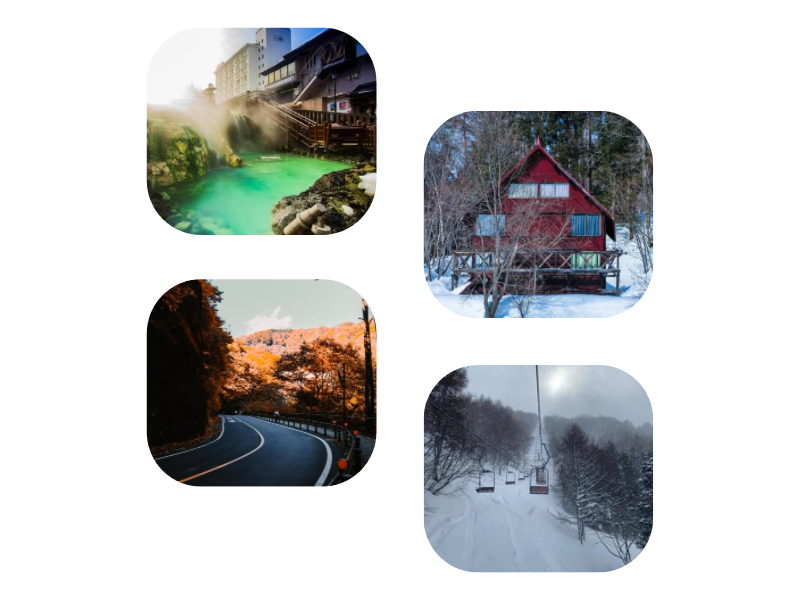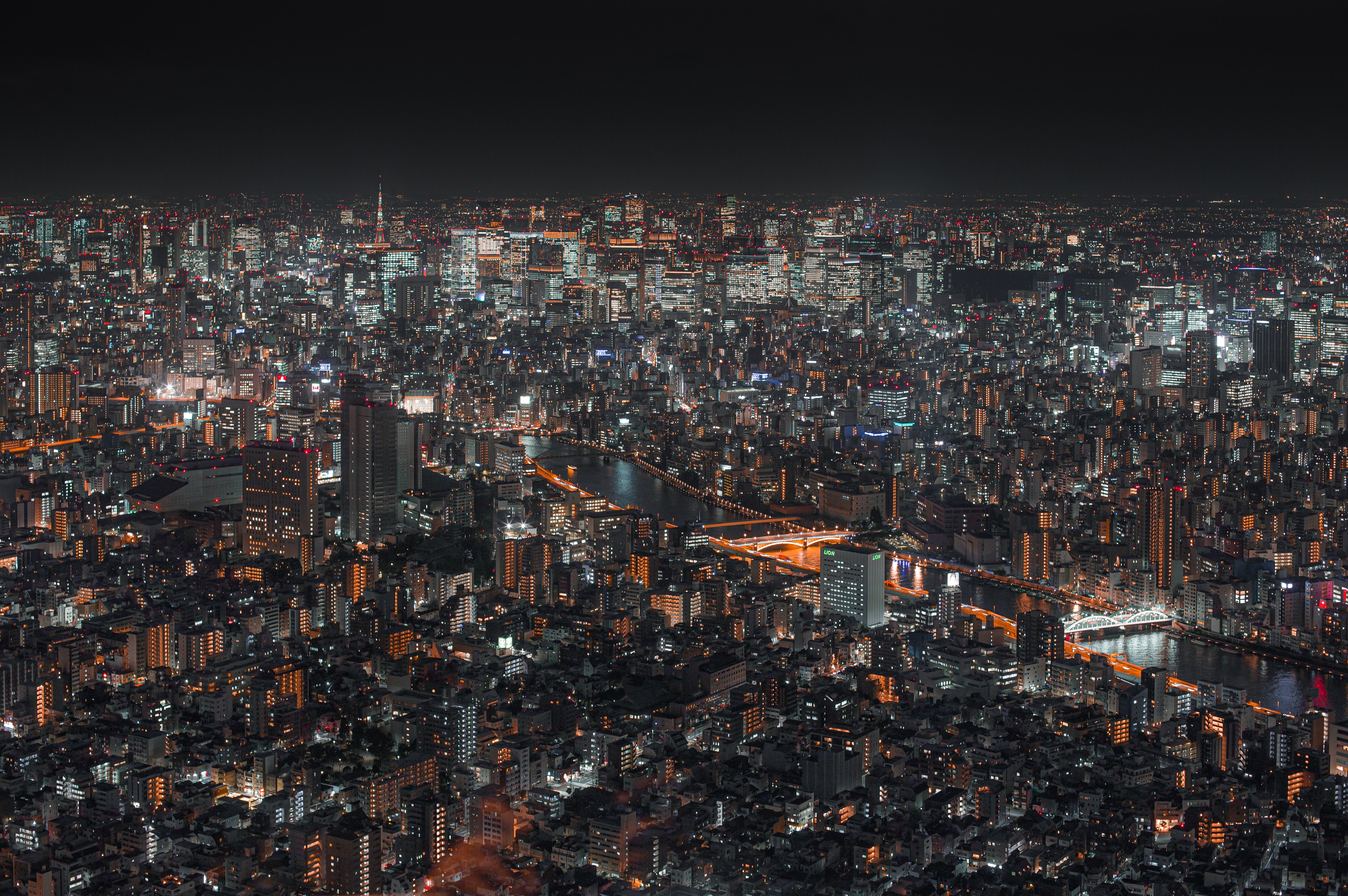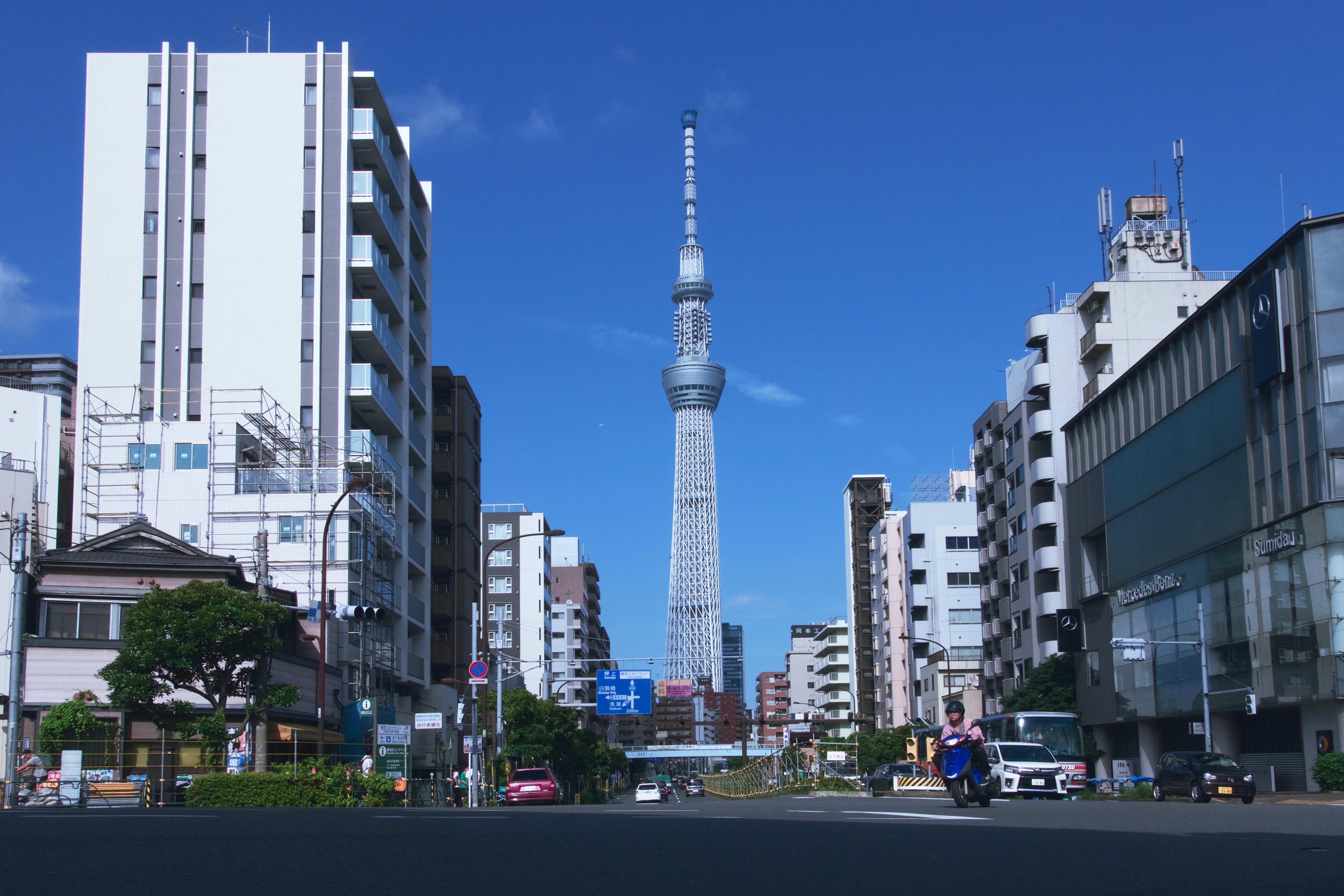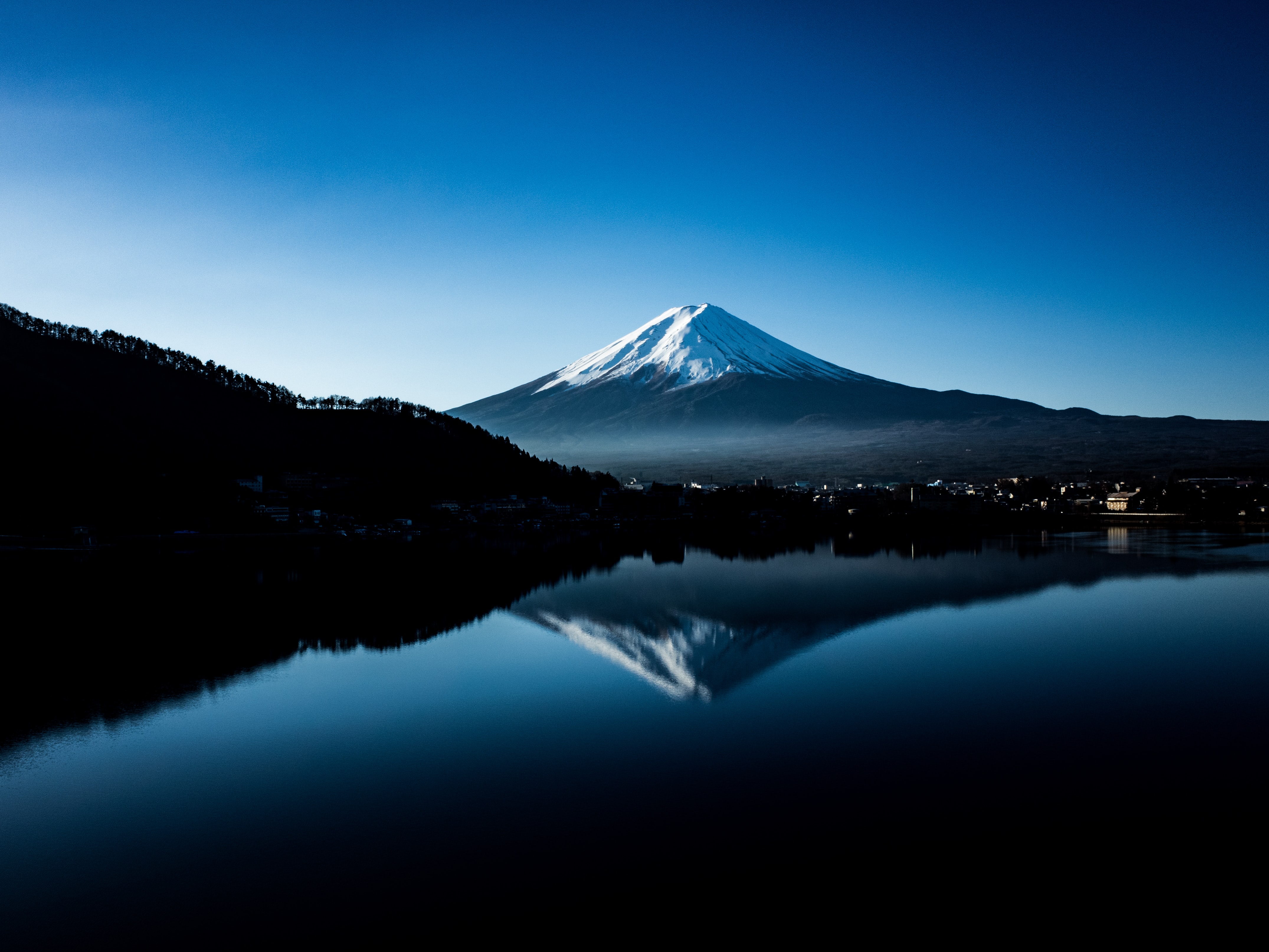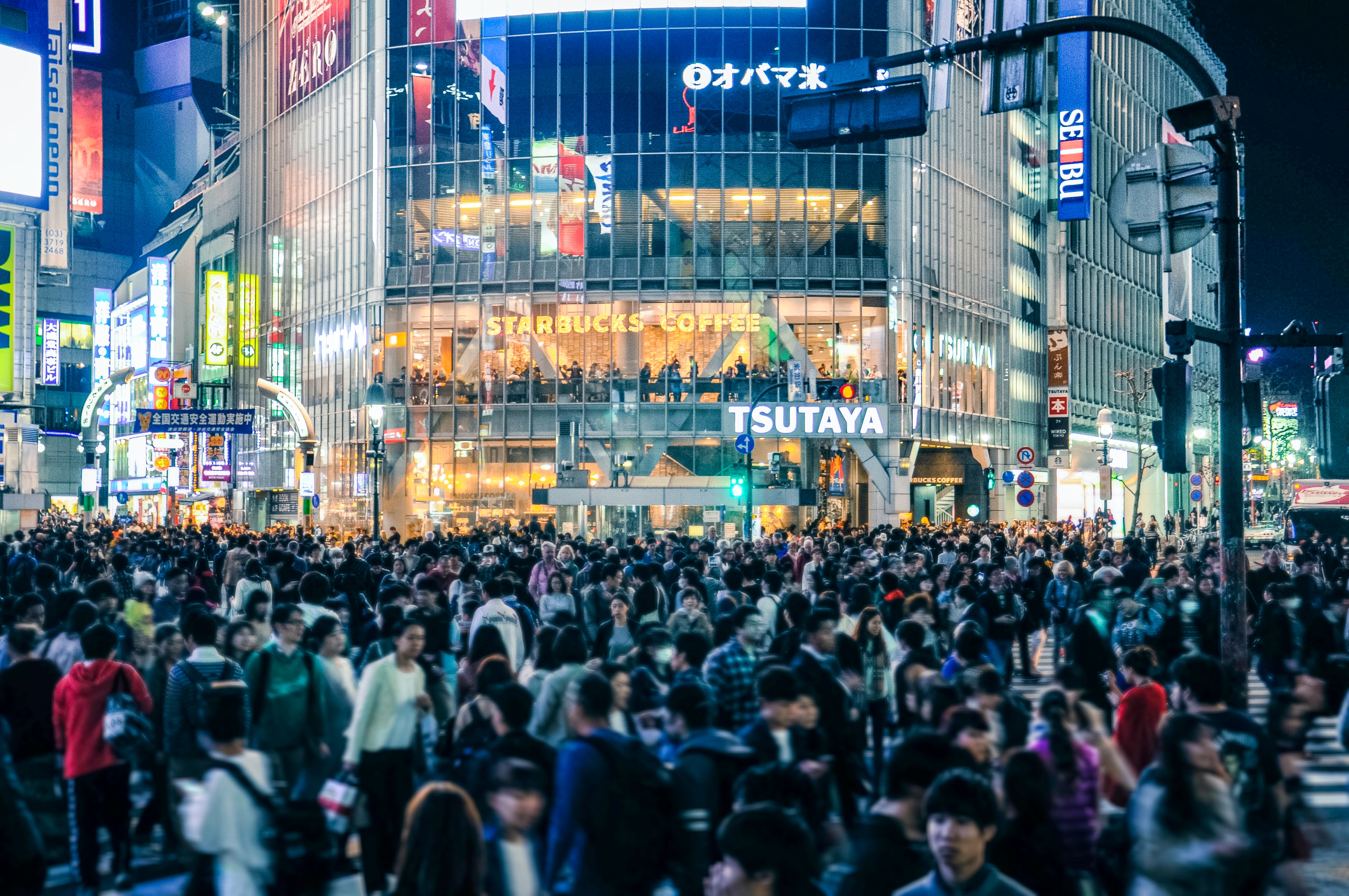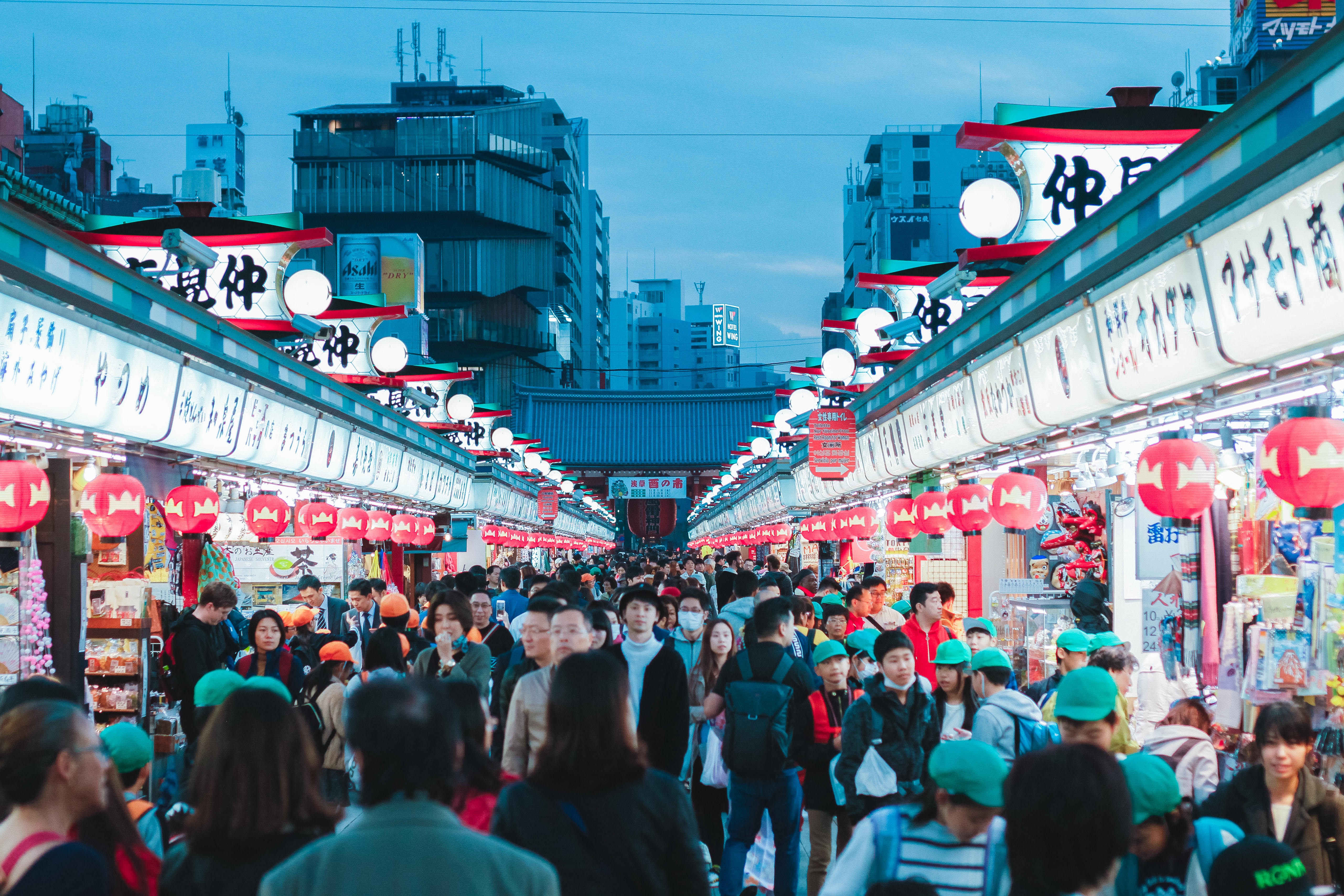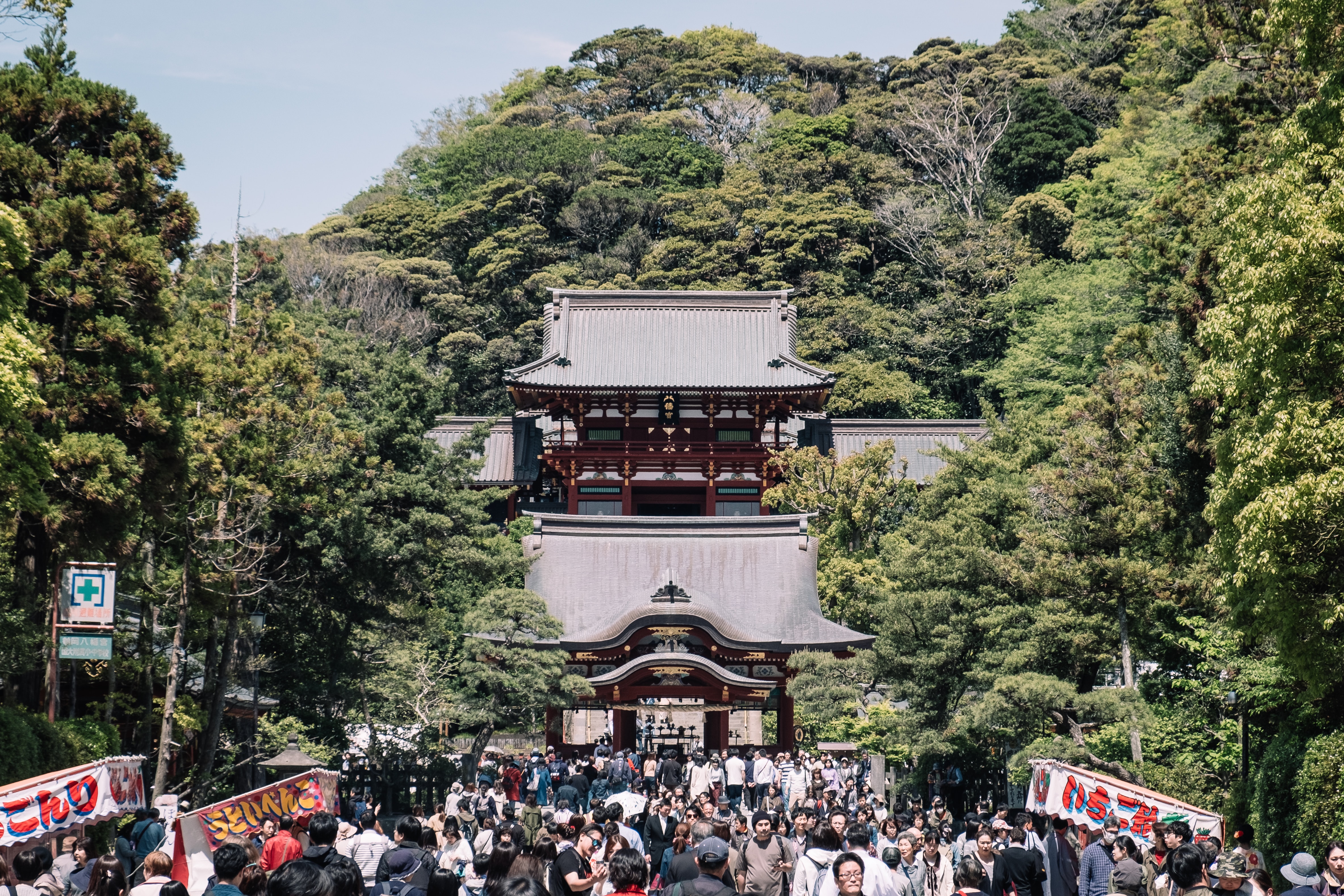Sightseeing - Kanto
Home of Japan's most populated area, the Kanto region of Japan is perfect for those who would like to experience the city life. Including Tokyo, Japan's capital, there are seven prefectures in this region: Chiba, Ibaraki, Tochigi, Gunma, Saitama, and Kanagawa. Chiba, to the east, is where Tokyo Disneyland and Narita Airport are located. Tochigi Prefecture is famous for its gyoza (dumplings), Saitama for its Edo atmosphere, and Ibaraki for the Hitachi Seaside Park, which has various flowers that bloom throughout the year in its gardens. We will be focusing on Gunma, Kanagawa, and Tokyo Prefecture.
Gunma
Gunma is famous for its Kiryu silk and is great for outdoor activities, such as skiing, onsen (hot springs), and canoeing.
Kusatsu Onsen, a popular hot spring town in Gunma, receives its steaming hot water (over 100°!) from Mount Shirane nearby. Due to the extreme temperatures of the water,
locals perform yumomi, a technique used to cool down the water. If interested, tourists may watch this process take place at Netsu no Yu, one of the bathhouses. Before
entering any bathhouses, be sure to find out their policy on tattoos, as some establishments still view them as taboo. Not all bathhouses offer mixed-gender bathing, so
keep this in mind when planning your outing.
Gunma prefecture also has multiple nature parks, including Akagi Nature Park and Gunma Safari Park, and gorgeous lakes and waterfalls such as Lake Nozori and Konaka Otaki Waterfall.
If you are feeling brave, Ueno Sky Bridge offers a beautiful view of the scenery around the gorge below within the mountains. It is suspended nearly 300 feet from the ground and
leads to Fujido Cave.
Gunma is two hours by car 2-3 hours by train from Tokyo, and five hours by train from Osaka.
Kanagawa
One of the most iconic landmarks in Japan is Mt.Fuji. This volcano is the highest peak in Japan and is located in the town of Hakone. Tourists may hike to the peak of Mt.Fuji
to enjoy the mesmirising view of the town below, but it is important to prepare accordingly by bringing the appropriate gear and use best practice when climbing (taking breaks, staying
hydrated, etc.). If you are not up for the full climb, or simply want to take an overnight break, there are a number of huts stationed along the trail in which climbers can stay. Otherwise,
Mt.Fuji can be seen from various locations, including Tokyo Tower, Tokyo Skytree, Lake Ashinoko, or while riding the shinkansen between Tokyo and Osaka. Hakone also has onsen, boats shaped
like pirate ships for sightseeing, and black eggs that have been boiled in the local hot springs. More than an hour away is Odawara Castle, which was previously seized by the Hojo Clan and
later captured by Toyotomi Hideyoshi.
Recognized by its beautiful, illuminated waterfront, Yokohama is a popular city that blends Western, Japanese, and Chinese culture in one place. It is also home to one of the CUPNOODLE
Museums in Japan. At this museum, tourists can learn about the history of the famous CUPNOODLEs, watch the creation process, and even create their own custom CUPNOODLE to bring home.
For a more historic location, there is the Yokohama Red Brick Warehouse, which was once a customs inspection house for shipping boats in Yokohama. These days, the first building
is used as a gallery and for entertainment purposes, such as concerts. The second building houses shops and restaurants. Various outdoor events, such as ice skating, take place as well,
depending on the season.
Yokohama also has many unique places to dine. Its Chinatown district, which has around 500 different shops and restaurants, is the largest Chinatown in Japan and has been around since the 1800s.
If visiting during Chinese New Year, visitors can enjoy the traditional lion and dragon dances. In Motomachi, tourists can find a variety of shops and cafés, and enjoy different types of food,
such as hamburgers, "garlic cuisine", and what is known as "Yokohama French cuisine".
Located south of Yokohama is Kamakura, which is where one can visit The Great Buddha of Kamakura. Displayed outdoors at Kotoku-in temple, the statue stands at nearly 44 feet tall and
is believed to have been built in the 1200s. A short train-ride away is the Tsurugaoka Hachimangu Shrine, which is considered to be the most important Shinto shrine in Kamakura. It holds
many festivals throughout the year, such as the New Year's bonfire, the Tanabata festival, and Yabusame-shinji (horseback archery).
Kanagawa is around two hours from Tokyo, and four hours from Osaka by train.
Tokyo
Although it is the most populated city in Japan, travelers may be surprised to find that Tokyo is not a loud place. Even in one of its densest areas, Shibuya Scramble Crossing, the sound level is not
one that is comparable to that of New York City. Shibuya Scramble Crossing is the world's busiest pedestrian crossing. It is situated at a four-way intersection, at which all pedestrians
cross at once from five different directions upon the traffic lights turning red. Just a few feet away is a statue of one of the world's most famous dogs, Hachiko. This statue was
created to honor a dog named Hachiko, who, in the 1920s, would diligenty wait for his owner outside the Shibuya train station every day—even long after he passed away unbeknownst to the dog.
After ten years of patiently waiting for his beloved owner to return home, he passed away near the train station, and his story has been passed on ever since.
Another popular temple in the Kanto region is Sensoji, which is known for the giant lanterns placed at its gates, and Nakamise, its long shopping street. Upon entering the temple grounds,
visitors are able to purchase a variety of souvenirs: from swords, to keychains, to chopsticks and clothing. There is also plenty of food to enjoy, such as daifuku and fresh-made senbei (
rice crackers). At the end of Nakamise is the purifying area, where visitors rinse their hands and mouths before entering the temple. There are also stands to purchase o-mamori
(charms to protect against evil spirits, promote a healthy birth, pray for success, etc.) and to get your fortune told (omikuji). To have your fortune told, donate the
designated amount (typically a few hundred yen) and follow the instructions to receive your fortune slip. If it is bad luck, you should fold and tie it to the nearby musubidokoro to have
it reversed. These unlucky fortunes are later burned. If the fortune is good luck, you should keep it.
Two popular scenic spots in the city are Tokyo Tower and Tokyo Skytree. Both of these buildings offer a wonderful view of the Tokyo metropolitan area, and can be seen from miles away
throughout the city. Tokyo Tower's design was inspired by the Eiffel Tower in France, and is used as a communications tower. Tokyo Skytree, the newer of the two, is almost 1,000 feet taller than
Tokyo Tower and is only 40 minutes away by train. Both towers offer shopping, restaurants, galleries, and viewing decks for visitors. There is also another obersavtion deck
located at the Roppongi Hills Mori Tower, which is 30 minutes away from Tokyo Tower by train. Tourists can also find multiple high-end stores here, such as
Cartier, Balenciaga, and Gucci, in addition to restaurants, cafés, a cinema, and the TV Asahi Corporation building. There, visitors can by various souvenirs depicting popular
Japanese TV shows, play crane machines, and take photos.
If you are interested in the fashion scene, then Harajuku is the place to go. This area is well-known for its diverse street fashion and has a number of different
clothing stores to fit many tastes. One popular photography spot in this area is Tokyo Plaza Omotesando Harajuku. At the entrance is a set of escalators surrounded by
panels of mirrored stainless steel that reflects images of the surrounding area in all directions, giving the feel of a kaleidoscope. Inside the building is a
shopping mall with cafés, clothing stores, and a rooftop garden.
Tokyo is around two hours away from Osaka by train.
